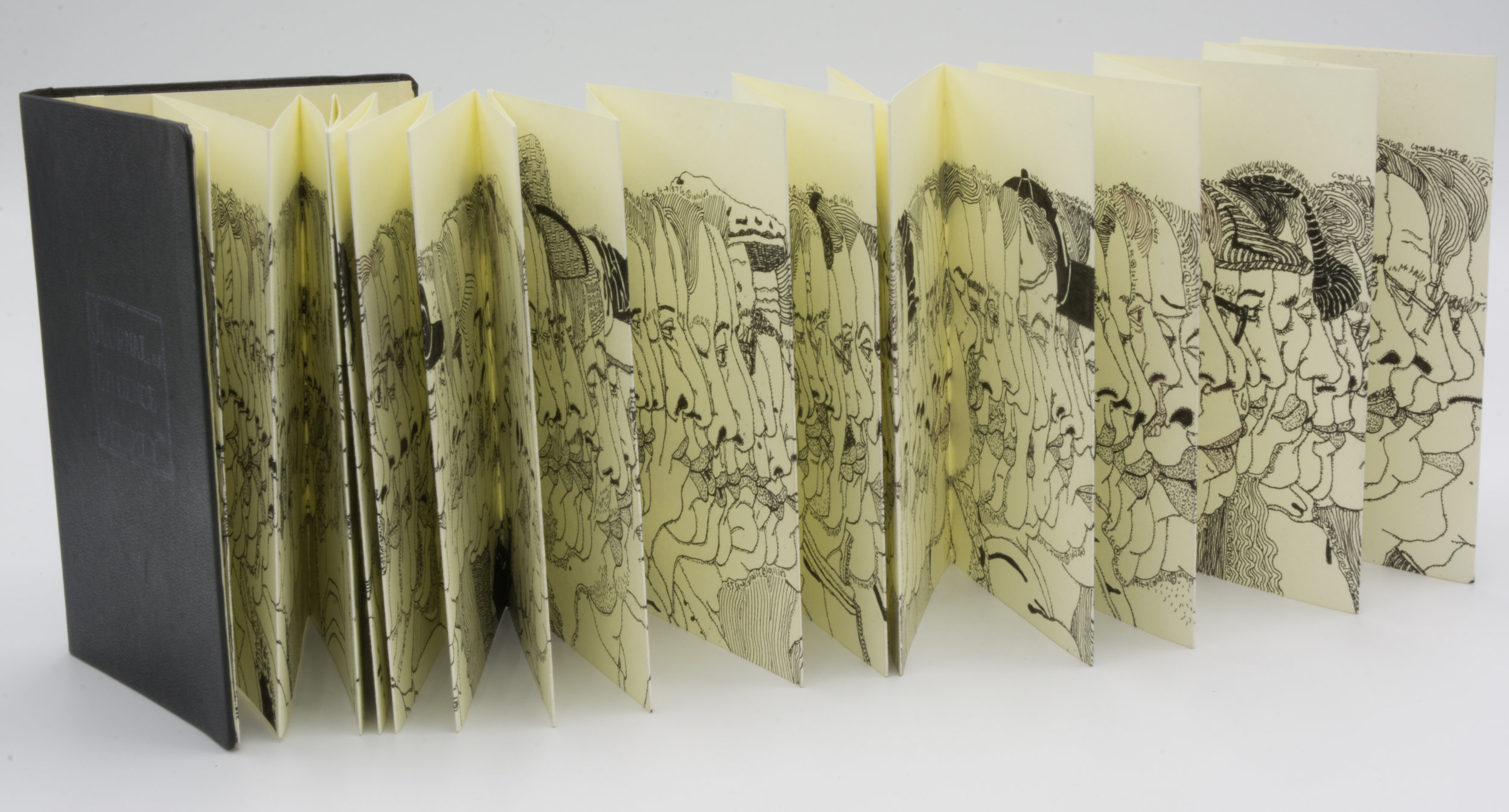ARS LIBRI 3
September 3 - Novmber 2, 2008
SALON: Jānis Avotiņš, Michael Fullerton, Laura Lancaster, Robert Olsen, Christopher Orr, Robert Russell, Norbert Schwontkowski, Jenny Scobel, Tim Trantenroth & Christof Yvoré
Journal of Evidence Weekly: Martin Wilner
The Ars Libri interior space features a selection of drawings and artist books by Martin Wilner from two bodies of work. Each of these bodies of work is formally distinct, but both bodies of work (and much of Wilner’s work in general) are about time, chronicling, evidence or documentation. The Making History series of works are calendrical drawings based on source material found in each day’s New York Times. Where we would expect to see dates and the names of the months, Wilner instead has simply substituted an image for the data that would otherwise orient us in time. In The Journal of Evidence Weekly, a selection of moleskin books are filled with Wilner’s daily observatory drawings from his New York City subway rides to and from work. The images are, in a sense, documentary vignettes based on subject matter randomly provided by chance and a shared urban existence. While Wilner describes the origins of this work as being, in part, about trying to find a way to maintain a practice, there is an other sense of practice at work too: Wilner is a psychiatrist. His rides to and from work are to and from different (though related) observational practices. Whether taking notes from a patient, or taking notes in observing his fellow passengers, Wilner’s exacting and excising eye result in evidentiary disclosure that neither patients nor passengers are aware of.
___
The front of the Ars Libri space features 21 paintings by ten different artists. Hung salon-style on the wall, the paintings in SALON were selected from approximately 395 paintings in The Cartin Collection with no other criteria in mind other than works that a curator thought might work well together. In a way, this is the most aggressively ‘curated’ group show an artist could imagine, where the intentions and concerns of the artist are not just minimized, misunderstood or suppressed in favor of a curator’s concerns: they are completely irrelevant. In the case of contemporary curatorial practice, artists and the culturati have come to expect deep consideration, meaning and argument from curators and other ‘meaning-makers’ in the art ecology. Yet this is a very recent expectation, as anyone familiar with the tradition of the salon can tell you. Robert Storr’s experiment Think with the Senses, Feel with the Mind not withstanding, the privilege of a private collection (and the rare and jealously held privilege of the private collection curator) is that, ultimately, no more argument needs to be made for an artist’s work or a grouping of work, but private, personal and highly subjective pleasure. The works in SALON were chosen by Cartin Collection curator Steven Holmes because he found each to be compelling, ambiguous. Simple. In the best tradition of the historical salon, the works in SALON are gathered together like the authors, poets, artists and philosophers of the Enlightenment were: not with any expectation of cohesion, or with any predictability at all, but with the excitement that comes from chance encounters and the vitality of the undetermined.













